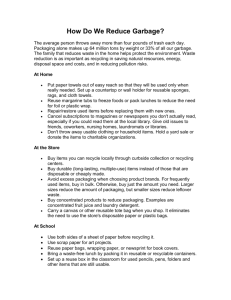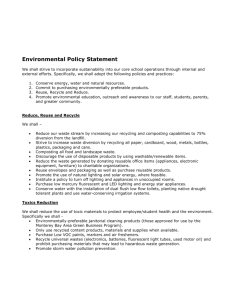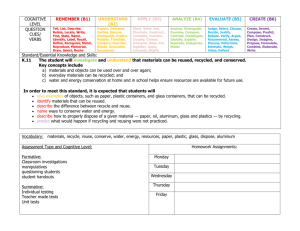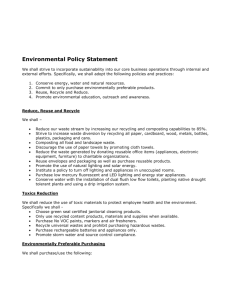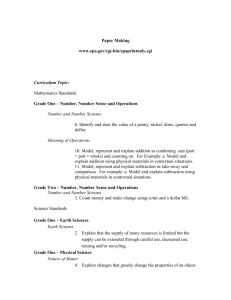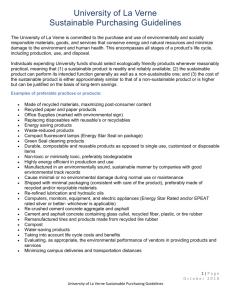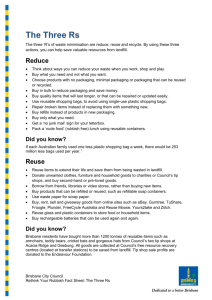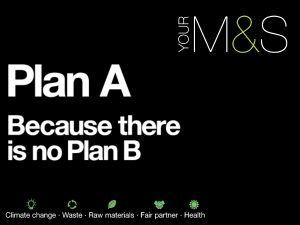CHECKLIST FOR SUSTAINABLE PURCHASING
advertisement
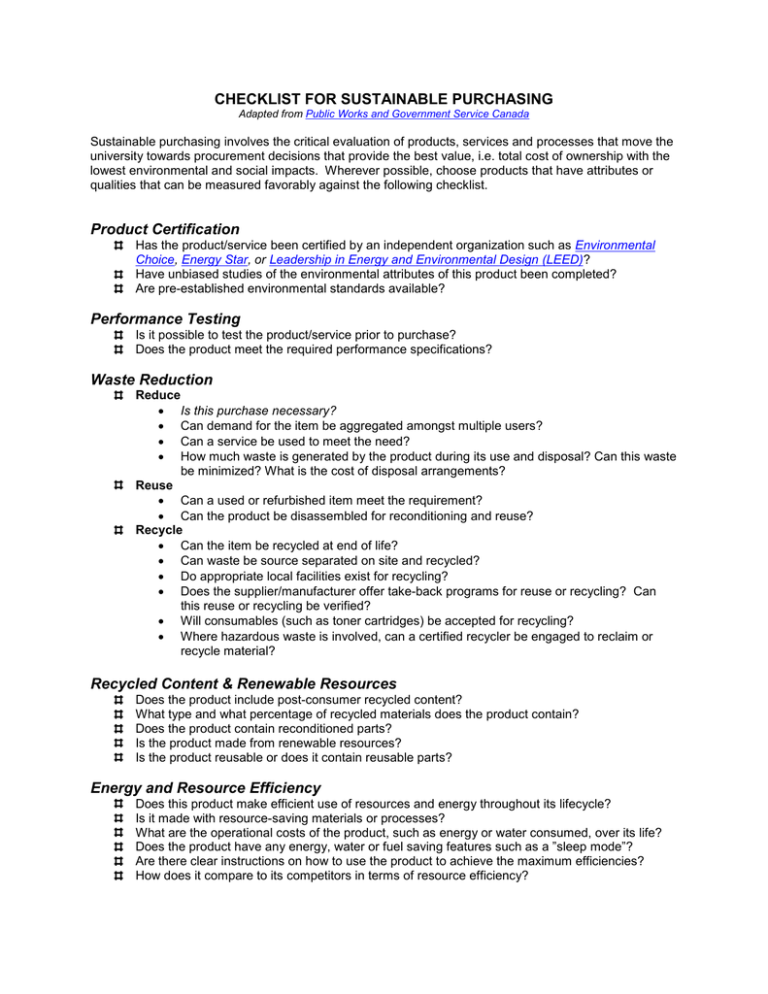
CHECKLIST FOR SUSTAINABLE PURCHASING Adapted from Public Works and Government Service Canada Sustainable purchasing involves the critical evaluation of products, services and processes that move the university towards procurement decisions that provide the best value, i.e. total cost of ownership with the lowest environmental and social impacts. Wherever possible, choose products that have attributes or qualities that can be measured favorably against the following checklist. Product Certification Has the product/service been certified by an independent organization such as Environmental Choice, Energy Star, or Leadership in Energy and Environmental Design (LEED)? Have unbiased studies of the environmental attributes of this product been completed? Are pre-established environmental standards available? Performance Testing Is it possible to test the product/service prior to purchase? Does the product meet the required performance specifications? Waste Reduction Reduce • Is this purchase necessary? • Can demand for the item be aggregated amongst multiple users? • Can a service be used to meet the need? • How much waste is generated by the product during its use and disposal? Can this waste be minimized? What is the cost of disposal arrangements? Reuse • Can a used or refurbished item meet the requirement? • Can the product be disassembled for reconditioning and reuse? Recycle • Can the item be recycled at end of life? • Can waste be source separated on site and recycled? • Do appropriate local facilities exist for recycling? • Does the supplier/manufacturer offer take-back programs for reuse or recycling? Can this reuse or recycling be verified? • Will consumables (such as toner cartridges) be accepted for recycling? • Where hazardous waste is involved, can a certified recycler be engaged to reclaim or recycle material? Recycled Content & Renewable Resources Does the product include post-consumer recycled content? What type and what percentage of recycled materials does the product contain? Does the product contain reconditioned parts? Is the product made from renewable resources? Is the product reusable or does it contain reusable parts? Energy and Resource Efficiency Does this product make efficient use of resources and energy throughout its lifecycle? Is it made with resource-saving materials or processes? What are the operational costs of the product, such as energy or water consumed, over its life? Does the product have any energy, water or fuel saving features such as a ”sleep mode”? Are there clear instructions on how to use the product to achieve the maximum efficiencies? How does it compare to its competitors in terms of resource efficiency? Hazardous Materials and VOCs Does the product require Material Safety Data Sheets (MSDS)? Does the supplier offer a non-hazardous equivalent for this product? Does the product release VOCs and is there a suitable alternate that generates lower emissions? Where hazardous waste is involved, can a certified recycler be engaged to reclaim or recycle material? Social Responsibility Where was the product made? Are employees provided with a safe and healthy working environment? Does the company exercise transparent ethical policies? If applicable, are any third-party audits performed Packaging Is packaging necessary to protect the product? Can the product be packaged in bulk if more than one is required? Is the packaging reusable or does it contain reusable parts? Is it recyclable? Can the packaging be returned to the supplier? Is the packaging made from renewable resources? Does the packaging material contain post-consumer recycled materials? Warranties and Durability Is the product durable? What is the expected useful life span of the product? How long is the warranty and should an extended warranty be purchased to increase life span? Maintenance Is the product designed for easy maintenance and repair? Are maintenance and replacement parts readily available and reasonably priced? Is the product easy and cost effective to upgrade or repair? Indirect Costs What indirect costs are associated with the good or service (e.g. less energy efficient IT equipment will produce more heat causing the building's air conditioning system to work harder and increase electricity costs)? Are additional administrative costs involved, such as WHMIS compliance? Supplier Sustainability Attributes Does the supplier/manufacturer have certification or registration (e.g. ISO 14001)? Does the supplier/manufacturer have an Environmental Management System (EMS) or environmental policy? Can the company verify all environmental claims? Does the supplier/manufacturer engage in voluntary environmental initiatives? Is the company producing the product in compliance with all environmental laws and regulations? What is the company’s record in handling environmental and safety issues? Check Environment Canada's website for Canadian Environmental Protection Act violations within the past five years.
